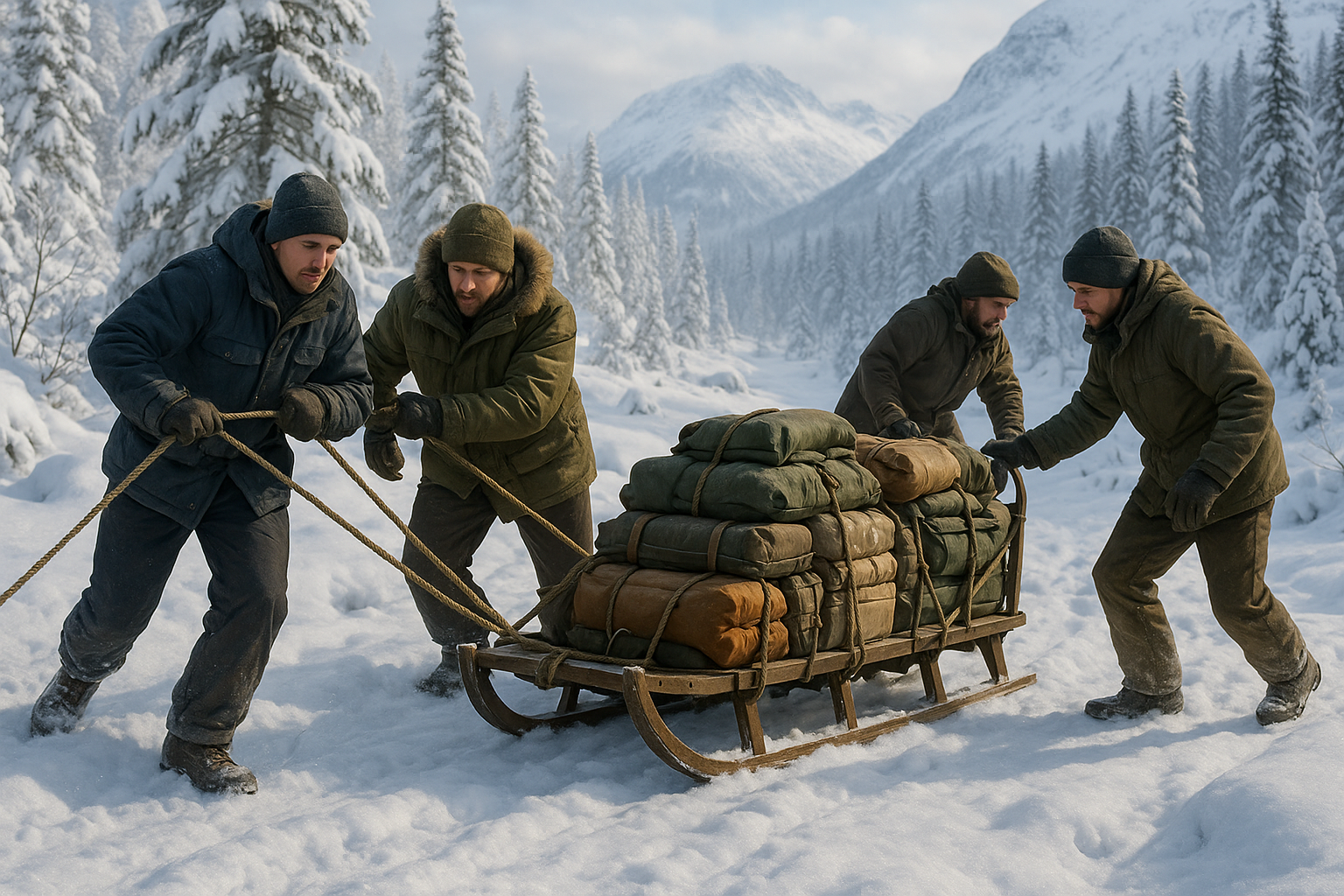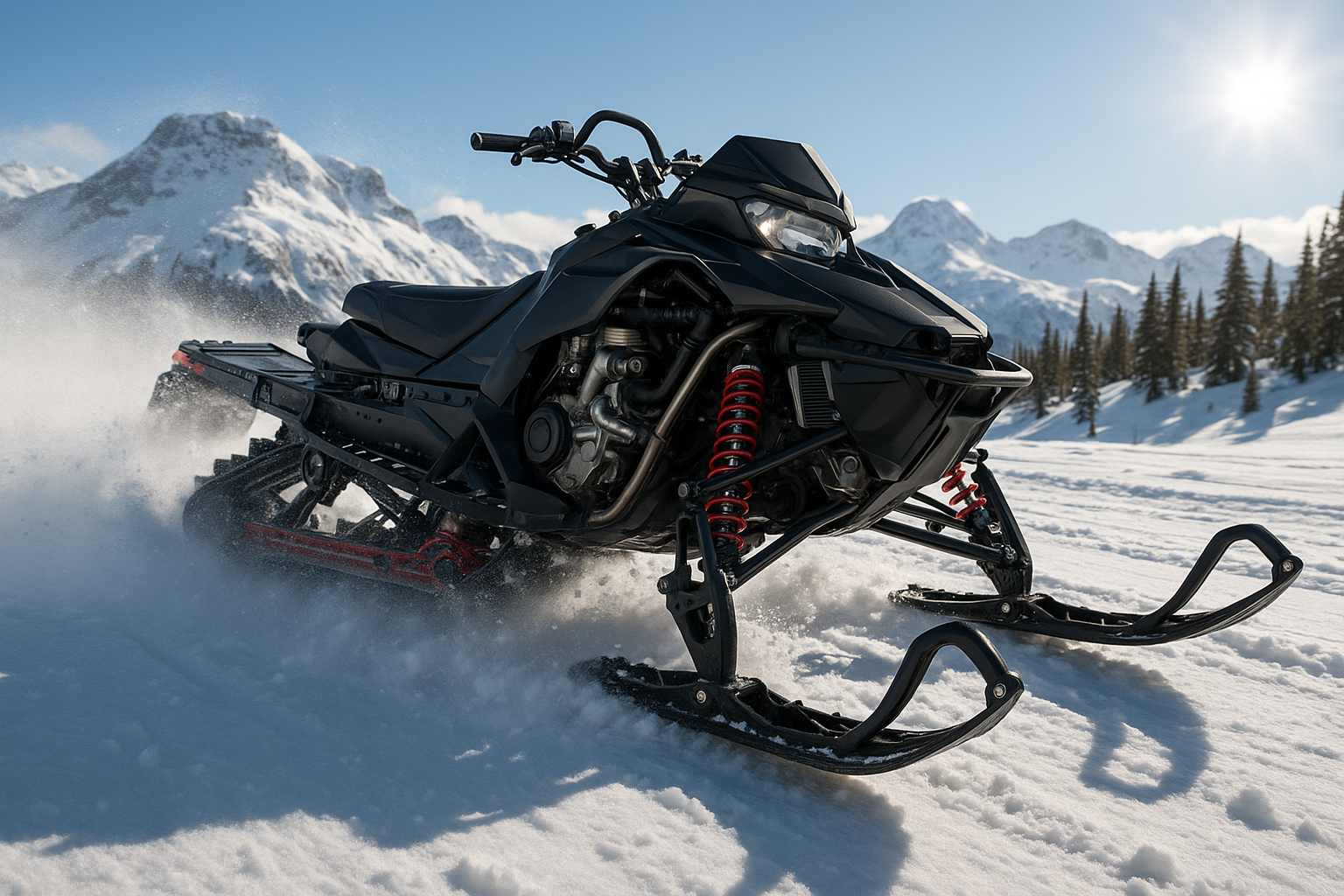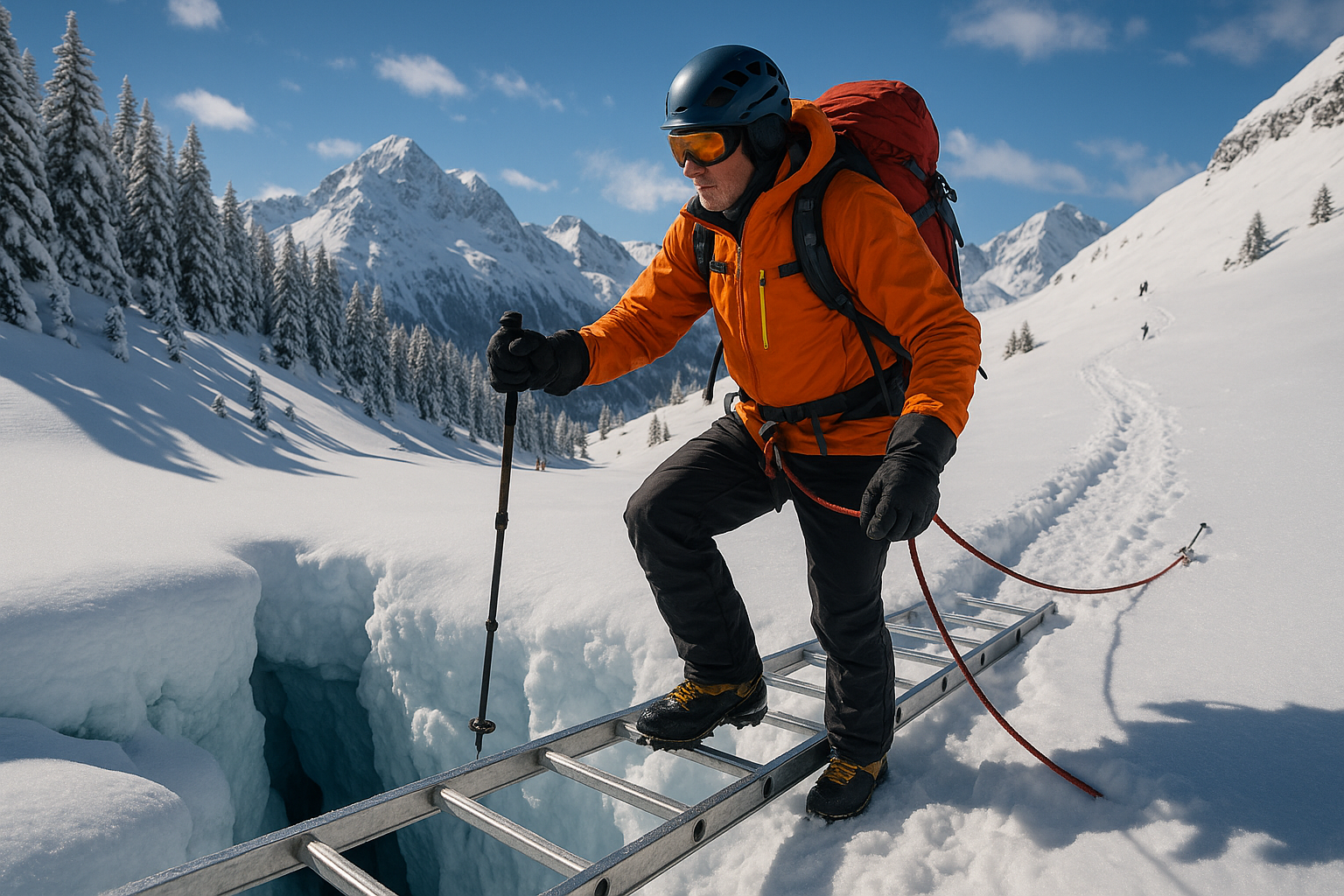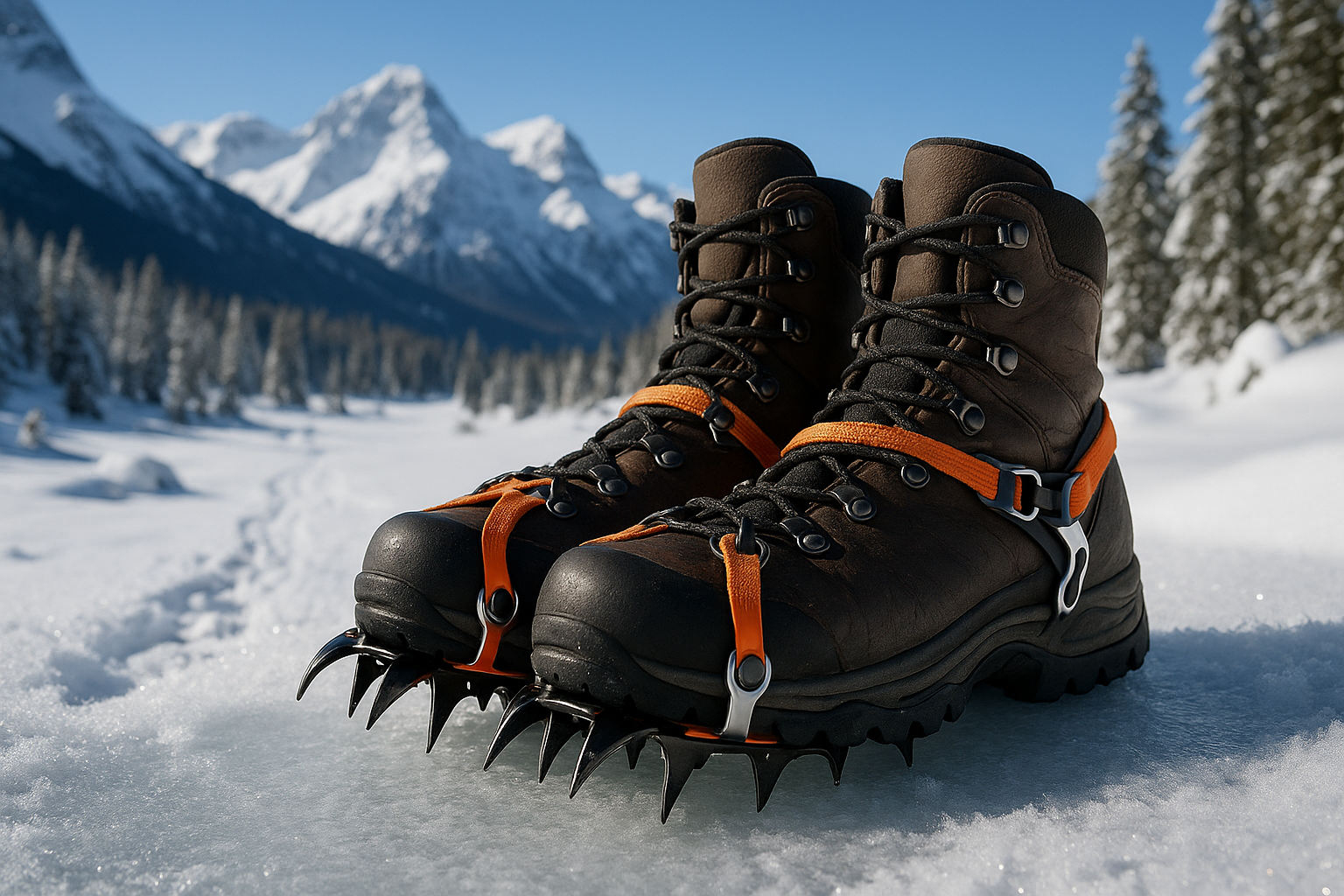When winter blankets the world in a glistening layer of snow and ice, transforming landscapes into serene white expanses, many see it as a call to retreat indoors, seeking warmth and comfort. Yet, for others, this is the perfect season to embrace the outdoors, to venture into the wilderness with sleds in tow, ready to transport goods or embark on adventurous expeditions. The art of team hauling sleds through winter wonderlands is both a skill and a strategy, and optimizing this process can lead to not only increased efficiency but also a more enjoyable and successful journey. ❄️
In this comprehensive guide, we dive into the world of team sled hauling, uncovering the techniques and strategies that can maximize efficiency during winter transport. Whether you’re a seasoned veteran of the snowy trails or a curious newcomer eager to learn, understanding the dynamics of sled hauling can make all the difference. From selecting the right equipment to perfecting team coordination, each element plays a crucial role in ensuring smooth and effective transport across icy terrains.
Why focus on efficiency, you ask? In harsh winter conditions, every ounce of energy saved can be crucial. Proper strategies minimize physical exertion and reduce the risk of accidents, making journeys not only faster but also safer. Moreover, an efficient team can cover greater distances with less effort, allowing more time to enjoy the stunning beauty of winter landscapes.
One of the key elements we’ll explore is equipment selection. 🛷 The type of sled, the harness system, and the load distribution all contribute significantly to the ease of transport. We’ll discuss the pros and cons of different sled types, from traditional wooden designs to modern, lightweight alternatives, and how to choose the best option based on your specific needs and terrain conditions. Additionally, we’ll look at harnesses and how they impact both the sled’s performance and the team’s comfort.
Team dynamics are another crucial aspect. How do you ensure that everyone is on the same page and working harmoniously? Communication, trust, and role distribution are vital components of a successful team. We’ll provide insights into how to build a cohesive unit, highlight the importance of assigning clear roles, and share tips on maintaining motivation and morale even in the face of challenging conditions.
Route planning is a topic that cannot be overlooked. Efficient sled hauling is not just about the physical act of pulling a sled; it’s also about making smart decisions before you even set foot on the snow. We’ll guide you through the process of choosing the best routes, understanding weather patterns, and utilizing technology for navigation and safety. Proper planning can help avoid obstacles and make the journey more predictable and less taxing on both people and equipment.
Moreover, we’ll touch on the ecological aspect of winter transport. As more adventurers take to the snow-covered trails, it’s crucial to consider the environmental impact. We’ll discuss sustainable practices that ensure the preservation of natural beauty for future generations. 🌿 By adopting eco-friendly approaches, teams can enjoy their adventures responsibly, leaving minimal traces behind.
Finally, we’ll address the importance of safety measures. Winter environments can be unpredictable, and being prepared for emergencies is essential. From first aid kits to communication devices, we’ll outline the must-have items and procedures to keep your team safe. By being proactive, you can handle unforeseen challenges with confidence and ease.
This article aims to be your go-to resource for mastering the art of team sled hauling. By the end, you’ll be equipped with the knowledge and skills to maximize efficiency, ensuring your winter transport adventures are smooth, safe, and successful. So, gear up and get ready to explore the snowy trails like never before! 🌨️

Conclusion
In conclusion, the art and science of maximizing efficiency in team hauling sled strategies are crucial for achieving smooth and effective winter transport. 🌨️ Throughout this article, we have explored various methods and techniques that can significantly enhance performance and collaboration among team members. From understanding the importance of communication and coordination to selecting the right equipment and optimizing load distribution, every element plays a pivotal role in ensuring successful sled hauling.
Firstly, we delved into the significance of clear communication and teamwork. Ensuring that every member of the team understands their role and responsibilities can prevent mishaps and enhance overall efficiency. This is particularly important when navigating challenging terrains and weather conditions, where synchronized efforts are vital.
We also highlighted the importance of choosing the right sled and harness system. Investing in high-quality, durable equipment not only ensures safety but also improves performance. Proper maintenance and regular checks can prevent unexpected breakdowns and ensure that the equipment functions at its best.
Another crucial aspect we covered is load distribution. Properly balancing the weight on the sled can prevent unnecessary strain on the team and optimize energy usage. This, combined with strategic planning and route selection, can significantly reduce travel time and enhance efficiency.
Moreover, the role of training and conditioning cannot be overstated. A well-prepared team that has undergone rigorous training is more likely to perform efficiently under pressure. Encouraging regular practice sessions can build endurance and foster a sense of camaraderie among team members.
As we wrap up, it’s important to reinforce the relevance of these strategies in real-world scenarios. By implementing the insights discussed, teams can not only improve their hauling efficiency but also ensure safety and success in their winter expeditions. ❄️
We encourage you to take these strategies and apply them to your own team hauling endeavors. Whether you’re an experienced hauler or a novice, there’s always room for improvement and innovation. Feel free to share your experiences, insights, or any additional tips in the comments section below. Engaging in a dialogue with others in the community can provide valuable perspectives and foster collective learning.
If you found this article helpful, consider sharing it with others who might benefit from these strategies. Together, we can create a more efficient and effective approach to team hauling sled strategies.
For further reading and resources, check out these active links: Outdoor Life and ExplorersWeb.
Thank you for joining us on this journey towards mastering winter transport. Your dedication to learning and improving is commendable, and we hope that the knowledge shared here will serve you well in your future endeavors. 🚀
This conclusion encapsulates the key points of your article while encouraging reader engagement through comments and sharing. It maintains a professional and inspiring tone, complemented by strategic use of emojis to enhance engagement. Make sure to verify the links before publishing to ensure they are still active and relevant.
Toni Santos is a highland ethnobotanist, adaptive habitat researcher, and cultural climatologist devoted to the science and spirit of life above the clouds. Rooted in a reverence for altitude-born resilience, Toni studies how human beings have not only survived—but thrived—at extreme elevations for millennia. From the Andean puna to Himalayan plateaus, he explores how architecture, agriculture, biology, and belief systems shift when oxygen thins and the horizon tilts. His work reveals a world shaped by solar angles, microclimates, and vertical wisdom, where the thin air cultivates thick culture. Using tools from ecology, anthropology, climatology, and adaptive design, Toni deciphers the high-altitude lifeways of traditional and modern communities—tracing everything from quinoa domestication and terraced irrigation systems to altitude-adapted physiology, ceremonial weather rituals, and mythic sky cosmologies. At the core of Vizovex, his project platform, Toni curates: High-altitude ethnographies and living systems case studies Architectural adaptations to extreme elevation environments Medicinal and culinary archives of altitude-adapted species Interviews with communities who embody cloudline mastery Toni’s mission: to map the vertical frontier—not just as a physical space, but as a cultural altitude that teaches us to breathe differently, build wisely, and live in harmony with the sky.




